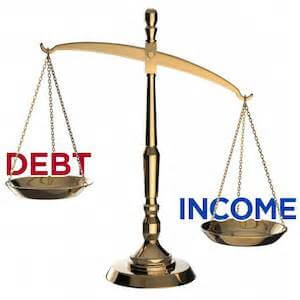
Think It’s Impossible to Get a Mortgage With Little or No Income and a High Debt Ratio? Think Again.
02-07-2014About MortgagesEddie KnoellImagine this scenario: a buyer is in the market for a new home. They’ve found a place that they like, and they have some money in the bank. In fact, they have significant assets in their name and are living comfortably. And yet they come to a lender looking to get qualified for a mortgage, and they are turned down. Why? The key is documentable income. Basically, what that means is income that can be shown on a paystub.
It’s regular, and it’s coming in like clockwork. This is a requirement of mortgage qualification for a pretty obvious reason. The lender needs to know that if your mortgage payment is going to be $1200 a month, you have enough income coming in to cover that payment plus your other expenses, every month, all the time. If not, trouble can’t be far away. Foreclosure is bad for everyone.
Lenders are in the business of loaning money, not managing a portfolio of properties. They want you to stay in your house. But they need you to keep making the payments. So for the most part, documentable income is an absolute must. And yet, every rule has its exception. So what do you do if you’ve got a healthy retirement fund and you’re looking to buy a new place, but you fall into one of the following categories:
Working, but only part time
Retired, not drawing a paycheck
Working, but have a debt-to-income ratio (DTI) that would disqualify you from conventional financing
A Secret Weapon For Home Buyer!
There’s a secret weapon for people like this: for lack of a better term, we’ll call it “Asset Depletion Qualifying”, because that’s exactly what it is. The way it works is this: a lender needs to show income to qualify you, so they calculate a derived income from the retirement accounts of a borrower. They then use this on its own (if no additional income is present) or they add this derived income to the regular, verifiable income from the borrower’s tax returns.
It sounds complicated, but it’s actually simpler than you might think. The calculation for the derived income is performed as follows: the lender will begin with the balance of the borrower’s retirement account, which for the purposes of our example will be at the nice, round number of $100,000. Because a person cashing in their account today would walk away (after penalties and withholdings) with about 60% of the total balance, the lender will multiply the balance of the account by (you guessed it!) 60%.
So, $100,000 times 60% = $60,000.
The lender would then divide that number by 36 (because they want to see the income available for at least a 3-year period) for a total of $1,666.
This number is the derived asset depletion income, meaning that on a monthly basis, that $100,000 retirement account balance can be depleted by $1,666 of “income” toward mortgage qualification. However much is in the qualifying accounts, the ratios stay the same. Therefore, a $300,000 account balance would give us $5,000/month of “income” ($300,000 x .6 = $180,000 ÷ 36 = $5,000). Pretty simple, right? So what’s the catch? You may have noticed how many times I mentioned the words “retirement account”. Using this method of qualification, the funds must come from a retirement account, not traditional savings. Those are the rules of the game. Some examples of where a borrower might have qualifying funds:
- Roth or traditional IRA
- 401K
- Keogh retirement account (for the self-employed)
Who Does A Home Loan Program Like This Help?
First, it can work well as a supplement for those attempting to qualify for large loans where documented income is insufficient on its own. Similarly, it works to help borrowers with a high debt-to-income ratio.
Second, it helps borrowers who are self-employed and have insufficient documentable income because of tax deductions or write offs, or who have not established self-employment income for a sufficient length of time.
Third, it can help retirees or other individuals who aren’t working, but are still in a good financial position to purchase a new home.
On the surface, it might seem that a program like this is more well suited to those nearing or at retirement age. The fact is, it can be used for borrowers at any stage of life or career, provided that they have the funds in the right type of account. When your life situation falls outside the normal parameters of mortgage lending, it’s important to find options for creative financing. If you have assets in a retirement account, asset depletion qualifying may be just the trick you’ve been looking for to get you qualified for a home purchase, even if you have little or no income or a high debt ratio.
There Is More We Can Do To Help You With This!
Contact Us Today at 602-535-2171
Or email us at team@azmortgagebrothers.com
Or Complete our Inquiry Form